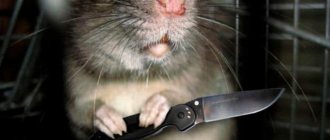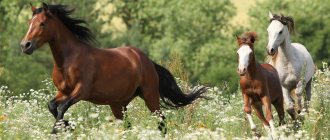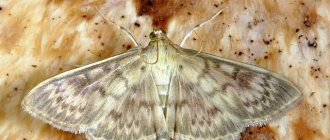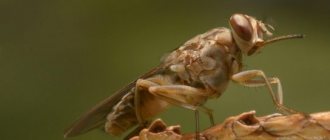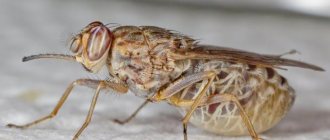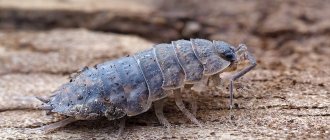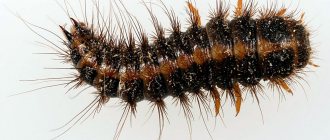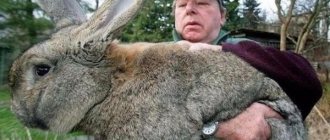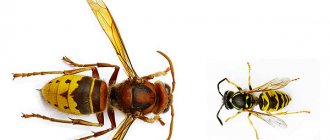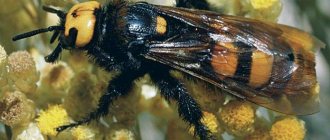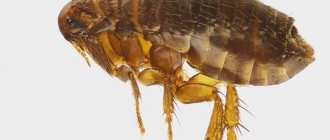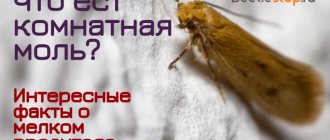The largest wasp in the world amazes with its size and danger. According to official statistics alone, about 50 people die from its bites in Japan every year. Residents of China also suffer; the mortality figures are similar. Shark attacks are less likely to be fatal than encounters with this fauna. Therefore, he has earned the title of not only the largest wasp in the world, but is also among the leaders of the most dangerous insects on the planet.
Where does the world's largest wasp live?
The title of the largest wasp in the world is rightly shared between the Asian hornet, the giant Scolia and the Indonesian wasp Megalara Garuda.
The Asian hornet lives in China, Japan and Korea. It is also found in the Primorsky Territory in Russia. Scolia gigantea lives in North Africa, the Middle East, Central Asia, Crimea, the Caucasus and some other southern regions of Russia. Due to climate change, the spread of these huge insects has been recorded in other areas.
Megalara Garuda lives on the island of Sulawesi in Indonesia.
Megalara Garuda
Literature
- Key to insects of the European part of the USSR. T. III. Hymenoptera. First part. // Suborder Apocrita – Stalk-bellied (Arnoldi K.V. et al.) / under the general. ed. G. S. Medvedeva. - L.: “Science”, 1978. - P. 47-56 (Scolioidea - Tobias V.I.). — 584 p. — (Key guides to the fauna of the USSR, published by the Zoological Institute of the USSR Academy of Sciences, issue 119.). — 3500 copies.
- Leley A. S. 1981. Wasps of the family Scoliidae (Hymenoptera) of the Far East of the USSR // Hymenoptera of the Far East. — Vladivostok. pp. 48-50.
- Leley A. S. 1995. Sem. Scoliidae - Scolia // Key to insects of the Russian Far East. - Saint Petersburg. Volume 4. Part 1. pp. 193-196.
- Fateryga A.V., K.I. Shorenko. 2012. (inaccessible link) Ukrainian Entomofaunistics 2012, 3(2): 11–20.
- Steinberg D. M. 1962. Sem. Scoliidae. Publishing House of the USSR Academy of Sciences, Moscow, Leningrad, Volume 8, 1–186 (Fauna of the USSR. Hymenoptera insects. Volume XIII. New series, No. 84).
- Argaman Q., 1996. Generic synopsis of Scoliidae (Hymenoptera, Scoloidea). // Annales Historico-Naturales Musei Nationalis Hungarici 88: 171—222, 107 figs.
- Betrem JG, 1928. Monographie der Indo-Australischen Scoliiden mit zoogeographischen Betrachtungen. // Treubia 9 (suppl. Vol.) 388 pp., 5 pls.
- Betrem, J. G. & Bradley, J. C. 1972. The African Campsomerinae (Hymenoptera, Scoliidae). // Monografieën van de Nederlandse Entomologische Vereniging 6: 1-326.
- Bradley JC & Betrem JG, 1967. The types of the Scoliidae described by Frederick Smith (Hym.). // Bull. Br. Mus. (Nat. Hist.) 20: 287–328.
- Brothers, DJ 1999. Phylogeny and evolution of wasps, ants and bees (Hymenoptera, Chrysisoidea, Vespoidea, and Apoidea). // Zoologica Scripta 28: 233–249.
- Brothers, DJ and Carpenter, JM 1993. Phylogeny of Aculeata: Chrysidoidea and Vespoidea (Hymenoptera). // Journal of Hymenoptera Research 2: 227-304.
- Carpenter, J. M. 1981. The phylogenetic relationships and natural classification of the Vespoidea (Hymenoptera). // Systematic Entomology 7: 11-38.
- Elliott, Michael, 2011. // Technical Reports of the Australian Museum (online) 22: 1-17.
- Goulet H & Huber JT: Hymenoptera of the world: An identification guide to families. // Center for Land and Biological Resources Research, Ottawa 1993, ISBN 0-660-14933-8
- Krombein KV, 1963. The Scoliidae of New Guinea, Bismarck Archipelago and Solomon Islands (Hymenoptera, Aculeata) Nova Guinea, // Zoology 22: 543–651, 42 figs.
- Krombein, Karl V. 1978. Smithsonian Contributions to Zoology, number 283, 56 pages, 36 figures.
How dangerous is the Asian giant hornet?
Hornets are the largest representatives of wasps. There are more than 20 species, but among all this species diversity, the largest and one of the most poisonous in the world, Vespa Mandarinia or the giant Asian hornet, stands out. It can reach almost 6 centimeters in length with a wingspan of 7.5 cm.
Asian hornet bites are not only very dangerous, but also extremely painful. In the process of stinging with its 6-mm sting, this giant wasp injects poison containing very strong toxins that cause destruction of cells in the human body, manifested externally in the form of swelling and inflammation. The action of toxins can ultimately even cause tissue necrosis.
The giant wasp, like all wasps, unlike bees, can sting many times, adding more and more new portions of poison. Such bites can be deadly, especially for people with hypersensitivity to insect venoms. The victims compare the bites themselves to hot nails driven into the body.
The situation is further aggravated by the fact that some components of the poison attract other hornets to the bitten person. It can be very difficult to escape from such a massive attack by winged killers.
Asian hornet
How to avoid an attack?
Planting grapes: timing, distance, preparing a hole and planting seedlings in open ground, conditions for the Moscow region and Siberia
Hornets are not curious like regular wasps or bees. These hymenopterans are not interested in people until they are close to the nest. Only by defending its home and life (its own or that of its relatives) will an insect rush headlong into battle. The danger of a hornet attack is that, sensing outside aggression, they begin to secrete a special anxiety hormone, which activates other individuals from the colony.
- If you happen to be close to an insect, then you should not make sudden movements or try to kill the hornet. This will only make him angry. It’s better to wait quietly and calmly for him to fly away.
- When going outdoors, you don’t need to wear sweet scents or wear bright clothes.
- You should not stop near a Hymenoptera nest. Having stumbled upon a hornet's home, it is better to retreat as quickly as possible - these insects do not pursue strangers over long distances.
- If the hornets try to bite, it is better to take refuge in some isolated room, car, or dive into the water and stay there as long as possible.
Hornets attack: video
Only coordinated actions in the event of a hornet bite will help to avoid the dangerous consequences caused by the insect's venom. Don't panic. The speed and correctness of manipulations, timely (if necessary) contact with a doctor will alleviate the victim’s condition and speed up his recovery.
Hornets pose a serious danger to humans. While a bee can bite just once, a hornet can do this several times in a row, which can be fatal. Therefore, everyone should know how to help a person if he is attacked by a hornet.
Lifestyle of the giant scolia
The giant Scolia is a representative of the order Hymenoptera. Its fundamental difference from other wasps is its solitary lifestyle. The insect also has purely external distinctive features: black color, yellow plaques on the abdomen, strong wings, rough legs covered in coarse hairs, a large head, short and silent flight.
This huge wasp develops in a traditional life cycle: egg, larva, pupa, adult. Preparations for laying eggs begin in late summer. First of all, the fertilized female digs a hole somewhere near the habitat of future prey, which are the larvae of insects of certain species: rhinoceros beetle, bronze beetle, and beetle. The purpose of the scolius when biting is to immobilize its victim, neutralizing its nervous system with the help of a sting, and deliver it alive to its burrow.
Then oviposition occurs - right on the body of the prey. Each future larva requires a personal burrow and its own victim. Having completed her task and climbed out, the female covers the entrances to the burrows with earth. Further development of the offspring occurs without her participation.
The larva begins to feed, destroying the least important organs first. The last to be destroyed are the victim’s circulatory and nervous systems. The duration of this stage is about 12 days. Larval development includes three molts. Having successfully destroyed all the insides of its victim, the larva prepares a cocoon directly in the shell of the eaten insect. This takes about a day.
The cocoon shell is formed with the help of the salivary glands, which produce a special silk thread. The next stage is the formation of the pupa. This happens within 1 month. By mid-spring, an adult Scolia gigantea comes into the world. The male Scolia is always significantly smaller than the female (32 mm versus 55 mm for the female).
The giant scolius bites humans only in self-defense. Unlike many of their relatives, scolia do not know how to transmit signals and do not attack in swarms. The wasp prefers to use its sting for its intended purpose - to neutralize insects caught for raising larvae. The venom of this giant wasp is much less toxic compared to other wasps and bees.
Since Scolia larvae infect the offspring of insect pests, and adult individuals pollinate plants, feeding on nectar and pollen, these wasps are rightfully classified as beneficial. They are even sometimes specially imported to protect sugar cane plantations, orchards, vineyards, and coconut palms.
Giant Scolia
Description of appearance
The large wasp is called the spotted scolius or giant scolias.
- The size of females is from 32 to 55 mm, males are smaller in size - about 32 mm.
- The main color is black. The anterior part of the sternum is bright yellow. Wide wings with a purple tint.
- The front part of the back and abdomen are covered with small red hairs, the rest of the body is covered with long black hairs.
- The head is round, shiny, and yellow in color. The back of the head is matte, black. The head has curved antennae and wide-set eyes.
A photo of a large wasp is presented below.
Megalara Garuda
In 2012, a large wasp was discovered on the island of Sulawesi in Indonesia, which received the name Megalara Garuda, that is, Big Garuda. In Indonesian mythology, Garuda is the king of birds, one of the symbols of Indonesia. The insect, which fell into the hands of University of California entomology professor Lynn Kimsey, was almost seven centimeters in length. In addition to its gigantic size, the monster wasp had powerful jaws that were much larger than its forelimbs.
Megalara Garuda is a predator. Female giant wasps paralyze large insects with their stings and hide them in the ground next to the oviposition site. The emerging offspring feed on hidden prey.
Giant jaws, according to one version, are needed by the insect to protect the nest; according to another, they help the male hold the female during copulation. There is very little information about Megalara Garuda yet. The study of these giant wasps continues.
5) Scorpios
These representatives of arthropods – scorpions – pose no small danger. These arachnid creatures number more than 2,450 species in their family. But out of a huge crowd of varieties, only 25 are deadly poisonous. Among them there are large specimens of 20-21 centimeters and very small ones reaching a maximum size of 12-13 mm. Scorpions are one of the oldest creatures on the planet, and are also not inferior in toxicity to spiders and snakes. Scorpions sometimes attack people by creeping in unnoticed from the back or side. They have very developed vision and therefore in most cases do not approach the victim directly. When I attack its prey, the scorpion thrusts its sting and injects poison. Possessors of a less toxic poison may cause the following symptoms: temporary fever, chills, temperature, headaches, swelling, burning at the injection site, nausea and lethargy. But poisonous representatives cause the following symptoms: dizziness, impaired consciousness, convulsions, tachycardia, asphyxia and sudden changes in pressure. In more severe cases: blood poisoning, paralysis, epilepsy, coma and death.
A bite of an insect
Despite the fact that insects bite rarely, help may be required. This is due to the fact that the reaction to poison differs in each individual organism. A characteristic feature of a giant wasp bite is that it bites without landing on the skin.
Symptoms and consequences
When the bite was made by one wasp, it will not provoke dangerous health complications. The poison penetrates in small quantities, and timely measures taken will help eliminate the problem as soon as possible. When a person is bitten by several scolias at once, this can provoke a state of shock. There is a risk of death from an allergic reaction in 2% of people. In rare situations, even 1 bite is enough.
A person’s heart rate increases, dizziness, nausea, gag reflex, and convulsions appear. A complicated reaction that occurs after a giant wasp sting is anaphylactic shock. The victim may lose consciousness. This reaction requires immediate medical attention. Complications from a bite are much more dangerous for the following groups of people:
- children;
- people with allergies;
- having diabetes, asthma;
- aged people;
- pregnant women.
Scolia, despite its impressive size, is considered less dangerous than an ordinary wasp. For the human body, insect venom is weaker. It only stings in self-defense.
The benefits of the giant wasp are much greater than the harm. Scolia populations become smaller every year, which can trigger their eventual extinction.
First aid
First of all, it is necessary to make sure what kind of insect made the bite, whether it is really scoliosis. If poison has penetrated into the body, then it is necessary to prevent its further spread. It is forbidden to squeeze it out from the bite site, as there is a possibility of infection. Immediate measures:
- It is necessary to disinfect with alcohol, hydrogen peroxide or iodine.
- You need to drink plenty of fluids.
- To slow down the absorption of the poison, apply a cooled heating pad, a damp towel or an application of soda to the affected area (1 teaspoon of the ingredient per 0.2 liters of water). A lump of soaked sugar also helps draw out the poison.
- To prevent an allergic reaction, it is recommended to use antihistamines.
- The main remedy for relieving swelling and counteracting pain is chilled applications.
- If the affected area is large, you can take diphenhydramine. When blood pressure has decreased, use cordiamine.
- Alcohol must be avoided, as it significantly increases swelling and worsens well-being.
Allergic reaction
Contact with any wasps can trigger the formation of allergies. A one-time injection of a toxic substance is not enough for dangerous complications to develop. Meanwhile, there is no need to fear the attack of many giant wasps, since they live alone.
In any case, you need to be extremely careful when such an insect is detected nearby. Scolia's bite is quite painful. In addition, sometimes the same reaction occurs as when contacting an encephalitis tick.
Classification
More than 300 species. Archaeoscolia hispanica known in fossil form
(130 Ma, Spain), Protoscolia sinensis (130 Ma, China), Cretoscolia montsecana
(130 Ma, Spain) and other species.
Subfamily ProscoliinaeProscolia Rasnitsyn, 1977Proscolia spectator Day, 1981
Subfamily Scoliinae
- Tribe
Campsomerini Campsomeriella
Betrem, 1941
Campsomeriella thoracica
(Fabricius, 1787)
Colpa
Dufour, 1841
Colpa klugii
(Vander Linden, 1827)
Colpa sexmaculata
(Fabricius, 1781)
Colpa quinquecincta
(Fabricius, 1781)
Dasyscolia
Bradley, 1951
Dasyscolia ciliata
(Fabricius, 1787)
Micromeriella
Betrem, 1972
Micromeriella curreola
(Klug, 1832) Tribe
Scoliini Megascolia
Betrem, 1928
Megascolia bidens
(Linnaeus, 1767)
Megascolia maculata
(Drury, 1773) - Scolia the giant
Scolia
Fabricius, 1775 fossil representatives
- †
Cretoscolia
†
Cretoscolia montsecana
(130 Ma, Spain) †
Cretoscolia conquensis
(130 Ma, Spain) †
Cretoscolia brasiliensis
(120 Ma, Brazil) †
Cretoscolia rasnitsyni
(120 Ma, China) †
Floriscolia
† Protoscolia
- †
Protoscolia sinensis
(130 Ma, China) †
Archaeoscolia
- †
Archaeoscolia hispanica
(130 Ma, Spain) †
Archaeoscolia senilis
(120 Ma, Mongolia)
Nutrition and reproduction
Nutrition is divided into stages of wasp development. The larvae can only feed on protein foods. Adult worker wasps pre-chew food and thereby remove liquid from it. Food that is almost ready for digestion is used as food. For food they hunt flies, ants, butterflies, bees and other insects. The jaws are often used for hunting, and the poison from the stings is saved for emergencies. Open markets with meat and fish are suitable for collecting protein food.
Adult wasps feed only on liquid food. Juice of fruits, plants, nectar of flowers. In markets, it is more often possible to see insects on shelves with sweet fruits: grapes, peaches, raspberries. They can suck blood from the body of an insect they have caught.
Reproduction begins in the spring. The female, after completing the construction of the first hundred nests, lays eggs. A week later, larvae - white worms - are born from the eggs. During abundant feeding, they become entangled in a web - they pupate. After three days, an adult appears. The whole process takes about 20 days.
Closer to July, the nest grows, and the number exceeds 100 wasps. Working insects are divided into types of activity. Some increase the hives, most obtain food, the smaller part feeds the larvae and guards the nest. In the colony, all wasps have equal rights. If the female dies, they are able to continue reproducing.
In the fall, males appear - drones, which are born to fertilize the female. She mates with more than one male. With the first cold weather, the entire colony, led by the old queen, dies. Only young females survive. They overwinter in crevices and repeat the whole process in the spring.
Lifestyle
The rules for the existence of hornets in nature are very similar to those of bees and ants. In order to survive during the cold winter and give birth to offspring every year, insects have to sacrifice someone and something. They sacrifice males, who die soon after mating. This way resources are not wasted on already “useless” individuals.
After all, in the hornet family, the females are the main ones. Therefore, they must prepare well for hibernation, survive it, and in the spring become the founder of a new colony. The uterus needs a large amount of protein to produce eggs and develop ovaries. In order to successfully overwinter, it eats very richly and accumulates a fat body.
Mating Features
The greatest activity in the hornet family is observed at the end of the warm period of the year, namely the end of August and the beginning of September. By this period, individuals of both sexes become adults. They all leave their home, swarm and mate. Thus, mating occurs before the onset of cold weather. Female hornets spend the winter pregnant.
Males die soon after mating. Females lead a solitary lifestyle. They feed heavily, and between meals they fly around the nearby territory in search of a safe place for winter shelter. Overwintering of a pregnant female hornet, which falls into suspended animation, is possible only in a secluded place where enemies and cold winds will not find her.
Wintering conditions
Crevices in rocks, tree hollows, shelters under stones and fallen trunks, and small cavities on the outside of unheated buildings or houses are well suited for this. There is no need to be afraid that the female will hide inside a human house. There's a good reason for this. When cold weather sets in, when the air temperature drops below 0C, all water freezes.
But the water in the hornets does not freeze. This is due to the fact that in the body of insects, water is replaced by glycerol. It does not freeze, but it slows down all life processes. This way, the glycerin cannot turn into ice and rupture the insect cells. If the hornet warms up prematurely, it will die during the next cold snap.
When the female hides for the winter in a heated human house, the warm air temperature will contribute to her premature awakening and the natural need to build a nest. If she manages to hide in a house from human eyes, then it will be very difficult for her to look for material to build the honeycomb of her “house”.
When she manages to build a nest, she will not be able to find enough food in the house to feed her offspring. Thus, she will doom him to certain death. Therefore, female hornets do not choose heated human houses for wintering.
A lot of female hornets die during harsh winters with little snow, as well as in the presence of winter thaws. If the female does not manage to hide well, she will become prey to various birds or small predators. Therefore, a significant number of hornets do not survive until spring.
Spring chores
The female hornet wakes up when the air temperature warms up to +15C. Young pregnant insects that wake up begin to actively hunt so that the embryos can develop into full-fledged eggs. In addition, the young female is looking for a suitable place to build her nest.
Help with a bite.
Old females also wake up, but they do not look for a place to build a nest. They scatter around the surrounding area. When the first cold days arrive, they stop their activity and freeze. As a rule, they die before they reach their second wintering. After a nest site has been found, the young female builds the first comb and lays her eggs there.
Only worker hornets emerge from the first eggs. The female must raise them. Then they take the baton into their own hands. Working individuals independently complete the nest and feed the larvae from later eggs. Already from these larvae males and females will grow. They will begin a new cycle in August. The lifespan of worker insects is only three to four weeks.
If you meet a hornet in early spring, it is most likely a pregnant female busy with procreation. She doesn't specifically touch people, but she's not afraid of them either. The female is not dangerous to you. She has no time to threaten anyone, because she has many more important things to do. Don't touch her. Let her reproduce her offspring.
OUR READERS RECOMMEND!
To get rid of insects, our readers recommend the Pest-Reject repeller
. The operation of the device is based on the technology of electromagnetic pulses and ultrasonic waves! Absolutely safe, environmentally friendly product for humans and pets. Read more here...
Where do wasps come from in a summer cottage?
The proximity to stinging insects is not very pleasing to summer residents, despite some benefits and assistance in pest control. If there are wasps in the area, the main reason may be the abundance of food for them in the form of flies, caterpillars and other living creatures. These predators usually appear from nearby forests, wastelands, and other wild places.
Insects are characterized by unpredictability. They are able to suspect danger in the sudden movements of the owners of the dacha, in children playing and in pets. A hornet can even attack an imaginary offender, signaling an alarm to other relatives.
Building a nest
The place for the hornets' nest must be protected from bad weather and drafts. In nature, hornets often build nests in tree hollows. If their number decreases, then the queen begins to look for a home closer to the person.
Sometimes they choose birdhouses, fill them completely with tiers of honeycombs and go on new searches. Sometimes hornets hang a nest on tree branches, hide it in rocks, holes or in the attics of human houses.
To make a nest, hornets use a material resembling cardboard . When expanding the structure, they lead tiers (5-7 pieces) from top to bottom. Each honeycomb plate has up to 500 cells. When viewed from the outside, the nest resembles a cocoon. The shape changes at different stages of construction. The protective walls reach 2-3 cm. The most common color of cocoons is brown.
How to get rid of hoverflies?
- chemicals;
- folk ways.
The control method is selected depending on the number of pests.
Chemicals
If larvae are noticed in the garden bed, they must be promptly disposed of. You can find a huge amount of products in stores. The most popular are:
- "Tiofos";
- "Heptahtor";
- "Fly-eater";
- "Inta-Vir";
- "Tabazol".
Important: when choosing this or that product, you need to study the instructions, otherwise you can destroy not only the larvae, but also the crop
Folk remedies
If there are not yet many larvae in the garden or flowers, you can use traditional methods:
- Water the garden bed with ammonia solution. 5 tablespoons of the substance are added to 10 liters of water.
- Sprinkle the beds with wood ash. You can also use tobacco powder.
- After harvesting, treat the soil with copper sulfate.
- Remove damaged plants and then burn them.
- The hoverfly does not like the smell of carrots, so it needs to be sown next to the onion bed.
- Treat the soil with urea. Add 1 tablespoon of the substance to a ten-liter bucket. One liter of solution is enough per square meter of land.
Is it worth declaring war?
If you think that being around giant wasps is unacceptable, you can try using insecticides. But this method is rather dubious, since scolias do not have nests that could be destroyed. Therefore, getting rid of these insects is guaranteed to be quite problematic. And is it worth doing? After all, they, as a rule, do not pose a threat to humans.
Very often, ordinary bees and wasps, circling around us, cause fear and aggression. What can we say if there is a real giant nearby? But the neighborhood with giant wasps is much safer than with the more familiar representatives of the Hymenoptera. Even if we do not take into account that they protect gardens from pests, these insects are simply incapable of seriously harming humans. Believe me, you can coexist peacefully with giant wasps. To do this, it is enough not to provoke them into aggression.
Source
